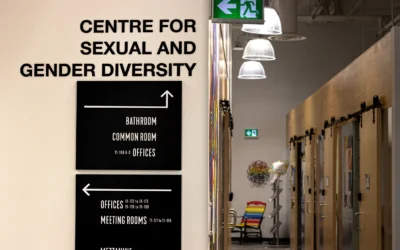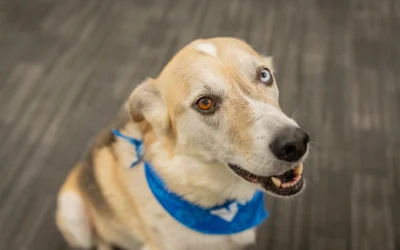When people think about a transgender individual’s transition, they often think about the physical aspects. Clothing, hair, hormones, and even surgery in some cases are all changes that can be seen as someone redefines themself. But one crucial factor that is often overlooked is how someone’s manner of communication changes depending on their gender.
Teresa Hardy is a speech-language pathologist in Edmonton who works to assist the underserved transgender community through her research at the University of Alberta. Throughout the year, she runs several clinics to help transgender people change their voices to match their preferred genders. Making these changes ensures that these individuals can engage with others confidently and without worrying that they will be accidentally outed.
“A lot of people come to me at the beginning and they’re at their wit’s end feeling frustrated,” she says. “To be able to come and learn and know what to do — even if by the time they finish seeing me they have the skills to continue on on their own, it makes a big difference to their lives.”
Simple things like calling someone on the phone or using a drive-thru can become negative experiences in these individuals’ lives when there is a chance their gender will be identified incorrectly.
Hardy’s clinical work focuses on helping people change the pitch of their voice to eliminate the stress of misidentification and help them feel more aligned with their chosen identity. After determining any pre-existing voice problems, the therapy uses a layered approach — starting with a hum before moving on to words, sentences, and eventually conversation — to teach a group of participants about pitch.
Like any other learned skill, the more a person practices, the sooner they will develop a voice they’re comfortable with. Hardy says the average amount of time it takes someone to develop their new voice is between six months and a year, but after the group session she will continue to work one-on-one with clients for as long as they want support. The most important factor is ensuring that they learn to use their new pitches efficiently and safely without straining their bodies.
But there are other aspects of communication that aid in gender identity, such as non-verbal cues. Hardy tries to touch on these features briefly during the sessions as well since they are picked up subconsciously during conversation.
“It’s just not something people think about — the social aspects of communication that we’ve learned, (like) mannerisms,” she says.
Stephanie Shostak, a member of the Trans Equality Society of Alberta and a trans-identified individual, says she was very fortunate to work with Hardy as part of her transition. She says that she always felt good about her appearance after transitioning, but because she has a slightly larger stature, she was worried that people would use her voice to misgender her.
“If you start speaking and (someone) overhears you and there’s a voice that doesn’t match the presentation, right away their guard is going to be up and they might have some opinions of you that may not be favourable,” says Shostak.
“It’s very important for people in the community as they transition … to be accepted in society as the true, authentic people that they are, but in order to do so we have to make sure that we fit into what society believes we should be when presenting as female (or male).”
The program has only worked with transgender women so far because Hardy hasn’t received any referrals for transgender men, something she says is likely due to the fact that transgender men usually feel satisfied with their voices after they start taking hormones. Hardy says that she has received a great deal of positive feedback from clients on how the sessions improve quality of life.
According to the Trans Murder Monitoring Project, transgender people are at a significantly increased risk of violence, with over 40 per cent of transgender people attempting suicide and one transgender individual being murdered every 31 hours worldwide.
“Because of how we still are in society, I think, when transgender people are identified as such, or if they are outed in the community, they are at increased risk for discrimination and harassment in all sorts of areas,” says Hardy. “And they’re … experiencing being misgendered which is also quite distressing for a lot of people.”
Shostak mirrors this idea, saying that gender norms have been ingrained in society for generations, and even though things are shifting, it’s going to take a while before transgender individuals are fully accepted. Until that happens, she says, people who go through transition will have to continue to do things such as speech therapy.
In the meantime, Hardy is working on a research component that she hopes will supplement the clinics. The research uses a CGI program generally used to analyze gait in order to record different aspects of communication, including things like gestures, to determine which characteristics are most important in conveying gender to other people. Though she does cover some information about non-verbal communication in her speech therapy sessions, this research will offer more definitive answers about which aspects to emphasize for maximum effect.
At the time when Hardy began working with transgender individuals, hardly any research existed on the topic. She says that a larger variety of information is slowly becoming available.
However, despite the strides being made in the field, resources are still lacking. The standard of care for individuals covered under the World Professional Association for Transgender Health includes voice surgery and voice therapy as key components of a successful transition, but access to these resources is scarce. Anyone looking to provide these services must go through specialized training and attend conferences that inform the practice.
Currently, Hardy is one of the only speech-language pathologists to work with the transgender community in Alberta, and the only one in the Edmonton area. She has four intakes a year of around six individuals each, meaning there can be wait times of well over a year to get into the sessions.
“It’s unfortunate that not every speech-language pathologist has been trained in regards to dealing with the (transgender) community,” says Shostak. “The community is large and the resources that are allocated are not enough to meet the demand.”
Photography by Matthew Jacula.





0 Comments